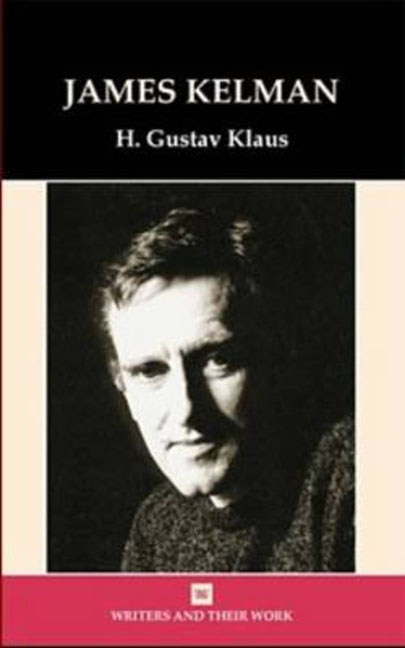Book contents
- Frontmatter
- Contents
- Acknowledgements
- Biographical Outline
- References
- 1 Introduction: ‘Fucking Realism’
- 2 Footloose in Country and City: The Early Short Stories
- 3 Unsettlingly Settled: The Busconductor Hines and A Chancer
- 4 Authority Flouted: The Plays and Essays
- 5 Contacts, Tensions, Emotions: Greyhound for Breakfast and The Burn
- 6 Under Surveillance, Resisting: A Disaffection; How Late it Was, How Late and Translated Accounts
- 7 Postscript: You Have to be Careful in the Land of the Free
- Notes
- Bibliography
- Index
5 - Contacts, Tensions, Emotions: Greyhound for Breakfast and The Burn
- Frontmatter
- Contents
- Acknowledgements
- Biographical Outline
- References
- 1 Introduction: ‘Fucking Realism’
- 2 Footloose in Country and City: The Early Short Stories
- 3 Unsettlingly Settled: The Busconductor Hines and A Chancer
- 4 Authority Flouted: The Plays and Essays
- 5 Contacts, Tensions, Emotions: Greyhound for Breakfast and The Burn
- 6 Under Surveillance, Resisting: A Disaffection; How Late it Was, How Late and Translated Accounts
- 7 Postscript: You Have to be Careful in the Land of the Free
- Notes
- Bibliography
- Index
Summary
In his study of Kafka Kelman quotes a diary entry by the author: ‘ “Don't you want to join us?” I was asked recently by an acquaintance when he ran across me alone after midnight in a coffee-house that was already almost deserted. “No, I don't,” I said.’ Kelman then comments:
Something is being shown about the creative process, about the making of stories, artistic possibility: Kafka has created the conditions for a ‘story’ but taken the ultimate possibility, he negates it. Yet, paradoxically, in so doing he has still written a story: extremely brief, yes, but a story in its own right and worthy of standing as such. Should anyone bring out an additional collection of his prose fiction in the future, there are a couple of ‘new’ pieces that may be discovered in his Diaries. (Judges, p. 272)
The remark shows, among other things, Kelman's keen alertness to the vignette-type short story, examples of which he would have come across in Hemingway's first booklet in our time (1924), which is not much longer than Short Tales from the Night Shift. Or if he did not see this small-press Parisian publication, he would have noticed the same vignettes, interspersed and italicized, in Hemingway's longer collection with the same, but capitalized title (1925).
Greyhound for Breakfast (1987), which together with The Burn represents the peak of Kelman's short-story writing, contains a host of such ‘wee’ stories, ranging from the single paragraph to a page and a half. In one of them, ‘An old story’, we find a blocked creative situation equivalent to Kafka's. The possibilities for a story are sketched, yet the story is never properly told.
She'd been going about in this depressed state for ages so I should've known something was up. But I didnt. You dont always see what's in front of your nose. I've been sitting about the house that long. You wind up in a daze. You dont see things properly, even with the weans, the weans especially. There again but she's no wean. No now. She's a young woman. Ach, I dont want to tell this story. (p. 185)
- Type
- Chapter
- Information
- James Kelman , pp. 63 - 75Publisher: Liverpool University PressPrint publication year: 2004

